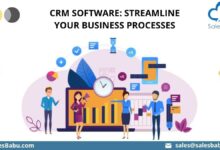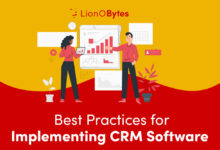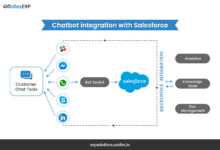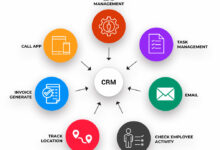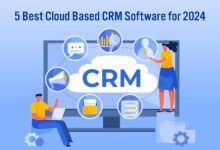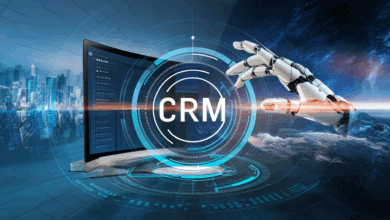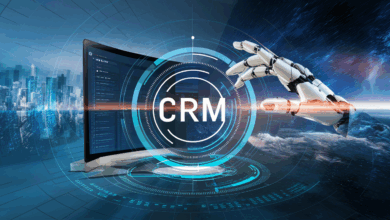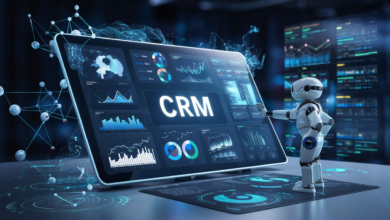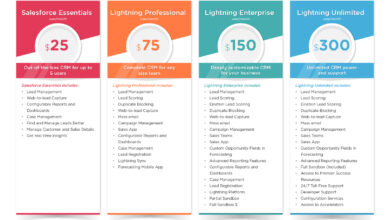Salesforce CRM Pricing: Factors, Models, Editions, Hidden Costs, Negotiation Tips, Transparency, Customization, Case Studies, Total Cost Of Ownership, Future Trends
Delving into Salesforce CRM pricing, this introduction immerses readers in a unique and compelling narrative about the various aspects of pricing strategies, models, and considerations within the Salesforce CRM ecosystem. From factors influencing pricing to future trends, this overview aims to provide a comprehensive understanding of Salesforce CRM pricing dynamics.
Factors influencing Salesforce CRM pricing
When it comes to determining the pricing of Salesforce CRM, there are several key factors that come into play. These factors can significantly impact the cost of implementing and using the CRM platform for businesses of all sizes. Let’s delve into the main factors that influence Salesforce CRM pricing:
Customization
Customization plays a crucial role in Salesforce CRM pricing. The more customized features and functionalities a business requires, the higher the cost will be. Tailoring the CRM to meet specific business needs involves additional development work, which adds to the overall price. For example, creating custom fields, workflows, and reports can increase the cost of Salesforce CRM implementation.
User Licenses
The number of user licenses needed also affects Salesforce CRM pricing. Each user license allows an individual to access the CRM platform, and the more licenses required, the higher the overall cost. Businesses must carefully assess their user needs to avoid unnecessary expenses. Additionally, different types of user licenses come with varying levels of access and functionality, impacting pricing accordingly.
Storage Needs
Storage needs are another factor that influences Salesforce CRM pricing. Storing large amounts of data within the CRM system can incur additional costs. Businesses with extensive data storage requirements may need to invest in higher storage capacities, leading to increased pricing. It is essential for organizations to evaluate their data storage needs accurately to avoid overspending on unnecessary storage space.
Integrations with Other Tools or Services
Integrating Salesforce CRM with other tools or services can impact pricing as well. Third-party integrations often require additional development work to ensure seamless connectivity between different systems. Depending on the complexity of the integrations and the number of third-party applications involved, the overall cost of Salesforce CRM implementation can vary. Businesses should consider the integration requirements carefully to budget for potential expenses.
Implementation Complexity
The complexity of implementing Salesforce CRM also plays a significant role in determining the final cost. More complex implementations, such as large-scale deployments across multiple departments or intricate customization needs, can lead to higher pricing. Factors like data migration, training, and ongoing support contribute to the overall complexity of implementation, impacting the total cost of using Salesforce CRM.
Salesforce CRM pricing models
When it comes to Salesforce CRM pricing, there are several models to choose from, each catering to different business needs and budgets. Let’s take a closer look at the various pricing models offered by Salesforce.
Per User/Per Month Pricing
The per user/per month pricing model is based on a monthly fee for each individual user of the CRM platform. This model is ideal for small to medium-sized businesses with a set number of users who require access to the system.
- Example: A small marketing agency with 10 employees who all need to use Salesforce CRM would benefit from this pricing model.
Advantages:
Easy to calculate costs on a per user basis, scalable for growing teams.
Disadvantages:
May become expensive for larger organizations with a high number of users.
Tiered Pricing
Tiered pricing involves different pricing levels based on the features and capabilities included in each tier. This model allows businesses to choose a package that aligns with their specific needs and budget.
- Example: A company that requires advanced analytics and reporting tools may opt for a higher tier with those features included.
Advantages:
Flexibility to choose the features that are most important, cost-effective for businesses with varying needs.
Disadvantages:
May be limiting for businesses that require customization outside of the predefined tiers.
Custom Pricing
Custom pricing is tailored to the specific requirements of each business, taking into account factors such as the number of users, level of customization, and additional integrations needed. This model offers the most flexibility but may come with a higher price tag.
- Example: Enterprise-level organizations with complex CRM needs and unique integrations may opt for custom pricing to ensure all their requirements are met.
Advantages:
Ability to tailor the CRM solution to the exact needs of the business, ensuring all requirements are met.
Disadvantages:
Can be costly, especially for businesses with extensive customization requirements.
Understanding Salesforce CRM edition pricing
When it comes to Salesforce CRM, there are several editions available to cater to the diverse needs of businesses. Each edition comes with its own set of features and pricing, allowing businesses to choose the right fit based on their requirements and budget.
Different Editions of Salesforce CRM
- Salesforce Essentials: This edition is designed for small businesses and includes basic CRM functionalities such as contact management, lead management, and opportunity management.
- Salesforce Professional: The Professional edition offers more advanced features like workflow automation, customizable reports, and dashboards, making it suitable for growing businesses.
- Salesforce Enterprise: Enterprise edition provides even more capabilities such as sales forecasting, territory management, and advanced analytics to support larger organizations.
- Salesforce Unlimited: The Unlimited edition is the most comprehensive offering with features like 24/7 support, unlimited customizations, and unlimited data storage, ideal for large enterprises with complex needs.
Variation in Pricing Across Editions
The pricing of Salesforce CRM editions varies based on the features and functionalities included in each edition. As you move from Essentials to Professional, Enterprise, and Unlimited editions, the pricing increases accordingly to reflect the added capabilities and support provided.
Features Included in Each Edition
| Edition | Features |
|---|---|
| Essentials | Contact Management, Lead Management, Opportunity Management |
| Professional | Workflow Automation, Customizable Reports, Dashboards |
| Enterprise | Sales Forecasting, Territory Management, Advanced Analytics |
| Unlimited | 24/7 Support, Unlimited Customizations, Unlimited Data Storage |
Choosing the Right Edition
- Businesses should assess their needs and budget constraints to determine the most suitable Salesforce CRM edition for their organization.
- Smaller businesses with limited requirements may find the Essentials edition sufficient, while larger enterprises with complex needs might opt for the Unlimited edition for maximum customization and support.
- It’s essential to consider factors like scalability, integration capabilities, and required features when selecting the right edition to ensure optimal CRM functionality.
Hidden costs in Salesforce CRM pricing
When considering Salesforce CRM pricing, businesses should be aware of potential hidden costs that can impact their budgeting decisions. These additional expenses often arise from add-ons, extra services, or customizations that may not be included in the initial pricing models offered. It is crucial for organizations to understand these hidden costs and develop strategies to effectively mitigate or budget for them during the evaluation process.
Add-ons and Extra Services
- Custom Integrations: Businesses may need to integrate Salesforce CRM with other software or systems, leading to additional costs for customization and development work.
- Training and Support: Investing in training programs or ongoing support services can incur additional expenses beyond the base subscription fee.
- Data Migration: Transferring existing data into Salesforce CRM may require specialized tools or services, resulting in extra charges.
Customizations and Upgrades
- Custom Development: Tailoring Salesforce CRM to meet specific business requirements often involves customization work that can lead to added costs.
- Upgrades and Updates: As Salesforce releases new features and updates, businesses may need to invest in upgrading their CRM instance, which can result in additional expenses.
Mitigation Strategies
- Thorough Evaluation: Conduct a comprehensive assessment of your organization’s needs and requirements to identify potential areas for additional costs.
- Transparent Communication: Communicate openly with Salesforce representatives to understand the full scope of pricing and any potential hidden costs.
- Budget Planning: Allocate funds specifically for add-ons, customizations, or extra services to avoid surprises and budget overruns.
Uncovering Hidden Costs
- Request Detailed Quotes: Ask for itemized quotes from Salesforce to uncover any hidden fees or charges that may not be initially apparent.
- Consult with Experts: Seek advice from CRM consultants or industry experts to gain insights into potential hidden costs and how to address them proactively.
- Read the Fine Print: Carefully review the terms and conditions of your Salesforce contract to identify any clauses related to additional costs or charges.
Salesforce CRM pricing negotiation tips
When it comes to negotiating Salesforce CRM pricing, there are several strategies you can employ to secure better deals and pricing structures. Understanding the pricing models and being prepared for negotiations is crucial in achieving favorable terms. Here are some tips to help you navigate the negotiation process:
Leverage competitor pricing
- Research and gather information on the pricing offered by Salesforce competitors. Use this data as leverage during negotiations to push for better pricing.
- Highlight the competitive landscape to emphasize the importance of receiving a competitive offer from Salesforce.
Utilize volume discounts
- If your organization requires a large number of licenses or features, inquire about volume discounts. Negotiating based on volume can lead to significant cost savings.
- Understand the thresholds for volume discounts and strategize on how to meet those requirements to secure better pricing.
Negotiate contract terms
- Review the contract terms offered by Salesforce and identify areas where you can negotiate for better terms, such as contract length, payment schedules, or service level agreements.
- Be prepared to walk away from negotiations if the terms are not favorable, but always maintain a respectful and professional tone.
Build a strong case for discounts
- Clearly outline your organization’s business needs and how Salesforce CRM can address those needs effectively.
- Provide concrete examples or data to support your case for discounts or special pricing, demonstrating the value that your organization brings to the table.
Salesforce CRM pricing transparency and visibility
In today’s competitive business landscape, having transparency and visibility in pricing structures is crucial for potential customers evaluating CRM solutions. Salesforce strives to provide clarity in their pricing to help businesses make informed decisions.
Level of Transparency and Visibility
- Salesforce offers detailed pricing information on their website, breaking down costs for each edition and add-on.
- Customers can easily access pricing details, including features included in each package, allowing for comparison.
- Clear information on pricing tiers helps businesses understand the value they are getting for their investment.
Navigating Pricing Information
- Businesses can navigate Salesforce’s pricing by exploring the different editions available and the features they offer.
- Utilizing Salesforce’s pricing calculator can help estimate costs based on user numbers and required functionalities.
- Reading through customer testimonials and case studies can provide insights into the ROI of Salesforce CRM.
Understanding Pricing Changes and Promotions
- Keeping an eye on Salesforce’s website and official communications can help businesses stay informed about pricing changes or promotions.
- Engaging with Salesforce representatives can provide clarity on any discounts or special offers available.
- Regularly reviewing pricing updates ensures businesses are aware of any new features or changes in pricing structures.
Importance of Clear Pricing Communication
- Clear pricing communication builds trust with potential customers, showing a commitment to honesty and fairness.
- Transparent pricing helps businesses budget effectively and understand the total cost of ownership of Salesforce CRM.
- Having visibility into pricing structures allows businesses to align their CRM investment with their specific needs and growth goals.
Customizing Salesforce CRM pricing for specific business needs
When it comes to Salesforce CRM pricing, businesses have the flexibility to customize their plans to suit their specific requirements. This tailored approach ensures that companies of different sizes and industries can find a pricing structure that aligns with their unique needs.
Customization Options for Pricing Structures
- Business Size: Salesforce offers pricing tiers based on the size of the organization, allowing small businesses to access essential features at a lower cost compared to larger enterprises.
- Industry-specific Features: Certain industries may require specialized features or integrations. Salesforce allows businesses to add or remove features based on their industry requirements.
- Scalability: Companies can choose pricing plans that offer scalability options, enabling them to adjust their CRM capabilities as their business grows.
Requesting Custom Pricing or Packages
- Businesses can reach out to Salesforce’s sales team to discuss their specific needs and request a customized pricing package tailored to their requirements.
- By providing detailed information about their business objectives, expected usage, and unique challenges, companies can work with Salesforce to create a personalized pricing plan.
Aligning Pricing with Business Needs and Objectives
- It’s essential for businesses to clearly define their goals and objectives when customizing Salesforce CRM pricing. This helps in selecting the right features and functionalities that align with their strategic priorities.
- By understanding their specific pain points and desired outcomes, companies can ensure that the CRM pricing structure supports their long-term growth and success.
Salesforce CRM pricing case studies
Implementing Salesforce CRM with different pricing structures can have varying outcomes for businesses. Let’s explore some real-world examples to understand the challenges, benefits, and overall impact of pricing decisions on CRM implementation.
Case Study 1: Small Business with Basic Pricing Model
- The small business opted for a standard pricing model offered by Salesforce CRM, which included basic features and limited customization options.
- Outcome: While the initial cost was low, the business faced challenges in scaling the CRM as it grew, leading to inefficiencies in managing customer data.
- Benefits: The business saw improved customer communication and tracking, but struggled to adapt to changing needs without customizable features.
- Impact: The pricing model impacted the overall success of CRM implementation by limiting the business’s ability to tailor the system to its specific requirements.
- ROI: The ROI was moderate in the short term but declined over time as the business outgrew the basic features.
Case Study 2: Enterprise with Customized Pricing Structure
- An enterprise chose a customized pricing structure with advanced features and extensive customization capabilities to meet complex business requirements.
- Outcome: The enterprise experienced seamless integration of Salesforce CRM with existing systems and processes, leading to improved efficiency and productivity.
- Benefits: The business gained a competitive edge by leveraging tailored solutions that enhanced customer engagement and data management.
- Impact: The pricing decision positively impacted the overall success of CRM implementation by aligning the system with the enterprise’s specific needs and goals.
- ROI: The enterprise achieved significant ROI and value from Salesforce CRM, surpassing initial expectations and driving growth.
Evaluating the total cost of ownership for Salesforce CRM
When considering the total cost of ownership for Salesforce CRM, it is essential to break down the various components that contribute to the overall expenses. This includes not only the initial pricing structure but also ongoing maintenance, support, training, and upgrades that are necessary for the system to function effectively.
Breakdown of Components
- Maintenance and Support: Regular maintenance and support services are crucial for keeping the Salesforce CRM system running smoothly. This can involve troubleshooting, bug fixes, and updates.
- Training: Proper training for employees on how to use Salesforce CRM efficiently is essential for maximizing its benefits and ensuring a good return on investment.
- Upgrades: As technology evolves, upgrades to the Salesforce CRM system may be necessary to incorporate new features, improve security, and enhance performance.
Calculating and Forecasting Total Cost
- Consider Long-term Expenses: It is important to look beyond the initial pricing structure and consider the long-term expenses associated with using Salesforce CRM. This includes ongoing costs for maintenance, support, training, and upgrades.
- Utilize Cost Estimation Tools: There are tools available that can help calculate and forecast the total cost of ownership for Salesforce CRM based on your specific business needs and usage requirements.
Importance of Long-term Expenses
- Planning for the Future: By considering long-term expenses, businesses can better plan and budget for the continued use of Salesforce CRM, ensuring that they are prepared for any unexpected costs that may arise.
- Maximizing ROI: Understanding the total cost of ownership can help businesses maximize their return on investment in Salesforce CRM by making informed decisions about how to allocate resources effectively.
Future trends in Salesforce CRM pricing
As technology continues to evolve and market demands shift, the pricing models for Salesforce CRM are also expected to undergo changes in the future. Businesses must stay informed about these potential trends to adapt their strategies accordingly.
Impact of advancements in technology on Salesforce CRM pricing
With the rapid advancements in technology such as artificial intelligence and automation, Salesforce CRM pricing may be influenced by the integration of these features. Businesses should prepare for potential changes in pricing models to leverage the benefits of new technologies effectively.
Market demands and competition in relation to Salesforce CRM pricing
The increasing demand for personalized customer experiences and the rise of competitors in the CRM industry can impact Salesforce CRM pricing strategies. Businesses need to keep a close eye on market trends and competitor pricing to stay competitive and adjust their pricing strategies accordingly.
Preparing for changes in Salesforce CRM pricing
To navigate future trends in Salesforce CRM pricing, businesses should focus on building flexibility into their pricing models, conducting regular market research, and staying updated on industry developments. By being proactive and adaptable, businesses can better prepare for any changes in Salesforce CRM pricing.
Importance of staying informed about evolving pricing trends
Staying informed about evolving pricing trends in the CRM industry is crucial for businesses to make informed decisions and stay ahead of the competition. By understanding the factors influencing Salesforce CRM pricing, businesses can proactively adjust their strategies and optimize their CRM investments.
Outcome Summary
In conclusion, Salesforce CRM pricing encompasses a complex landscape that requires businesses to navigate through various factors, models, and hidden costs to make informed decisions. By understanding the nuances of pricing negotiation, customization, and total cost of ownership, organizations can optimize their CRM investment and stay ahead of evolving pricing trends in the industry.
